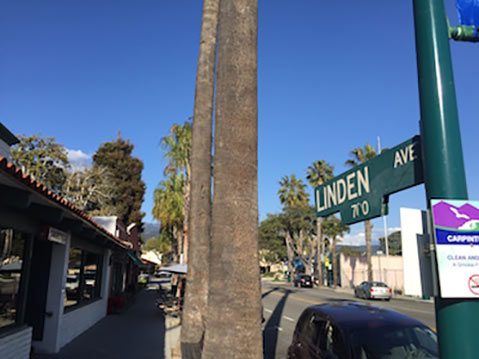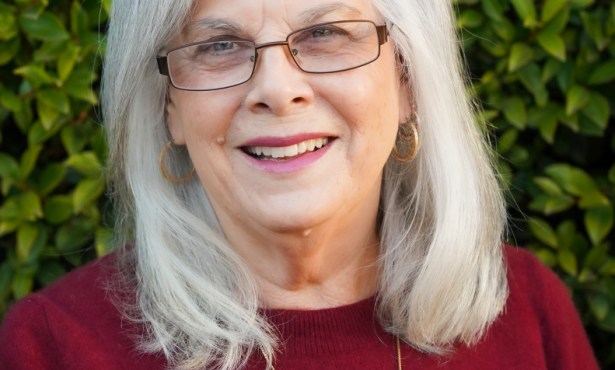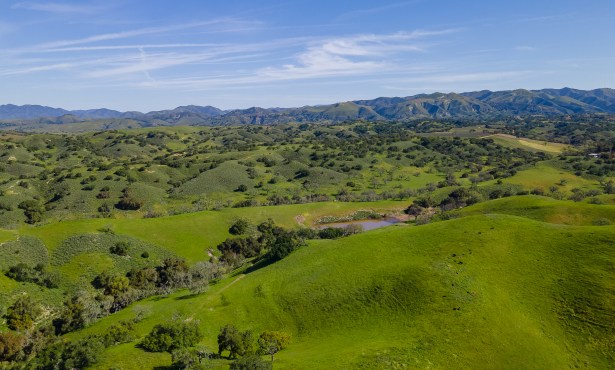Linden Avenue: Defiantly Unchanged
Carpinteria’s Main Drag Remains the Hub of a Quaint Beach Town

You can’t visit Carpinteria without strolling down Linden Avenue. For a century, it’s thrived as the beach town’s main drag, a straight shot from the 101 to the sand, lined with bars and cafés, unique boutiques, ethnic eats, and a park. Whereas Santa Barbara’s State Street never experiences a lull of international visitors, this route through Carpinteria’s downtown core offers calmer, lower-key charms.
“It’s all walkable,” said David W. Griggs, who, as director of the Carpinteria Valley Museum of History for three decades, knows Carp better than most residents (even if he actually lives in Noleta). “You always run into someone you know. [It’s amazing] being 1.5 hours away from L.A. and a world away.” And unlike neighboring Montecito, “it’s less gentrified,” Griggs explained. “Carpinteria is real.”
Carpinteria’s original Old Town ran north of the highway along Santa Monica Creek, which was a year-round source of fresh water in an area awash in salt marshes. But in the late 1880s, the railroad bed was raised along the salt marsh, and Southern Pacific built its depot at the foot of Linden Avenue. “That switched the center of town,” said Griggs. “That’s where the mail came. Linden was one of the first paved roads of the county.”
By 1894, a grand Victorian house stood at 701 Linden (which later burned), and in 1912, a brick hotel with adjacent bank, post office, and restaurant was built. “1912 was kind of a watershed year,” said Griggs, as it was then that the Chamber of Commerce coined its slogan “World’s Safest Beach” in hopes of attracting tourists to this “Mayberry by the Sea.” Eventually, the Palms Hotel evolved into The Palms Restaurant, which was Carp’s only beer bar for many years. Even today, The Palms — which is now owned by brothers Bill and Todd Bennett — remains Linden’s cornerstone.
The late-19th-century octagon house of the Alvarados, a prominent Mexican immigrant family, became Linden’s northern anchor, and the intersection of Linden and the Old Coast Highway became a crossroads. Then in the 1930s, Emma Grubb, who owned Taylor Ranch Rincon, went from broke to multimillionaire after oil and gas were discovered on her property. She redeveloped the 900 block of Linden.
Yet the beach side of the street had yet to improve. Said Griggs, “Lower Linden was kind of a rowdy Wild West.” It’s home to The Spot, which Griggs thinks is the second-oldest eatery in town. Originally Sherry’s Café, it transformed into The Spot (389 Linden Ave.) burger stand by the late ’50s. “That’s kind of a landmark,” Griggs said.
Other long-running businesses have shuttered: Hickey Brothers Hardware and Dick Morris Blacksmith Shop, formed in 1908 by the town constable, who groomed his protégé, town welder Joe Wullbrandt. Today, Wullbrandt is a nonagenarian residing at a Santa Barbara rest home while nephew John Wullbrandt created Linden’s oceanic “World’s Safest Beach” mural. “He painted for kings and sultans,” Griggs noted.
Despite the extra tourism outreach, Carpinteria has always existed a bit in the shadows of Santa Barbara. “Santa Barbara was always more cosmopolitan,” said Griggs, explaining that the only example of Spanish Colonial Revival architecture is in the Alcatraz Theatre, built in 1927 as the town’s first movie palace. “Carpinteria was always its pretty little sister. It was rural. It was hick. It’s [still] hard to buy underwear and socks in Carpinteria.”
Over the last 30 years, Griggs said that Linden Avenue “hasn’t changed dramatically. It’s improved. It’s increased in its restaurant offerings. It’s more visitor-serving.”
Two decades ago, civic leaders created Carpinteria Beautiful to revitalize the area, installing new street lighting along Linden, hiding utilities underground, and adding plants and a fountain. “It kind of became encoded at that point to maintain our rural and beach-town-charm feel,” said Griggs, who explained how the city has repelled attempts by such corporate entities as Target and Costco to establish Carp footholds. “They’re really protective and prideful that it is small-town,” he said of the residents. “That is its charm, and that will keep people coming and keep the hotels full.”



